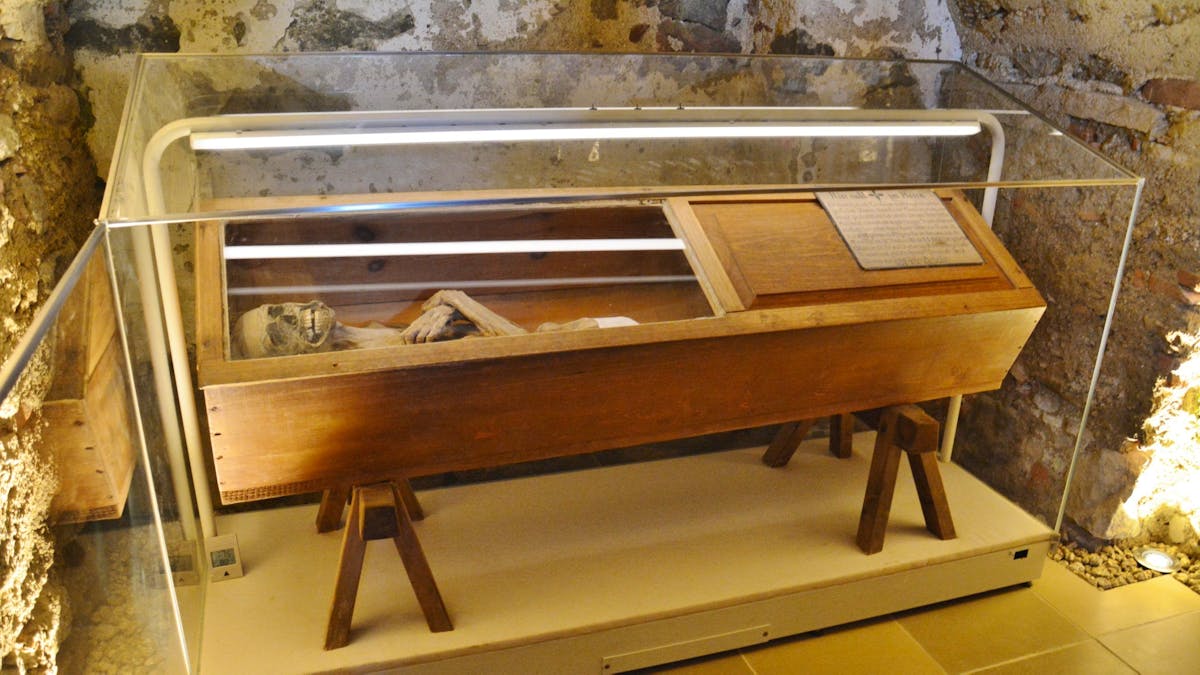The small village of Saint-Thomas Am Blasenstein, in Austria, houses a curiosity: a mummy nicknamed “the priest dried in the air”. Present in a crypt since 1800, it was only identified in 2018 as the Franz Xaverius Sydler von Rosenegg chaplain. He died on September 7, 1746 at 37, after being three years vicar of the parish of this village.
But the mystery persisted on its mummification, which tradition said it was natural, hence the nickname of the mummy. A new study by the Ludwig-Maximilians University of Munich shows that the religious, probably deceased following tuberculosis, has undergone a mummification operation. What is more exceptional.
“Our survey revealed that the excellent state of conservation of the body was due to an unusual embalming type,” said Andreas Nerlich, the main author of the study published in “Frontiers in Medicine”. This result was obtained by filling the abdomen by the rectal channel with wood chips, twigs and fabric, and adding zinc chloride for internal drying ”.
Interior dried
All these materials, as well as zinc, were thus used to absorb internal liquids and therefore to dry the body from the inside. There have been large amounts of fabrics of various types, including flax embroidered in an elaborate way, and even pieces of silk. A glass pearl, perhaps sewn on a piece of fabric, was also discovered in the mummy, relates ZME Science. This technique, completely new for scientists, allowed an excellent state of conservation of the trunk, while the face, skull and peripheral ends were less well preserved.
According to the pathologist, this new study “confirmed the identity of the mummy, but also the reason for good conservation of the body for about 240 years under the climate of central Europe. The elements suggest that this preservation aimed to avoid the spread of a miasma infection. A possible subsequent opening of the coffin or a displacement of human remains would have made it possible to discover a remarkably intact body and could have easily aroused miraculous beliefs in the local population. ”
It is no doubt better to believe in the miracle than to explain to believers how the body of their vicar was embalmed.

